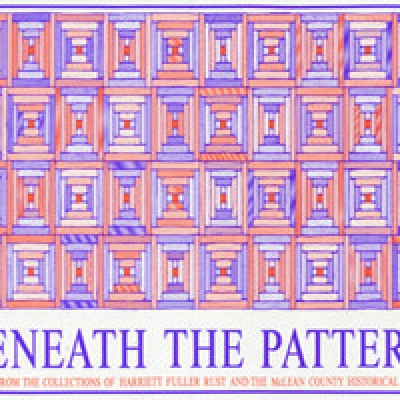36 exhibits
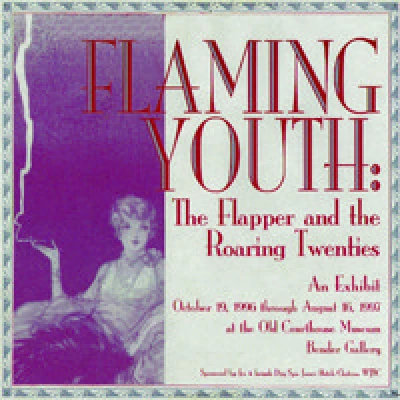
Flaming Youth: The Flapper and the Roaring Twenties
Flaming Youth: The Flapper and the Roaring Twenties An exhibit of 1920s women's costumes and the McLean County women who wore them.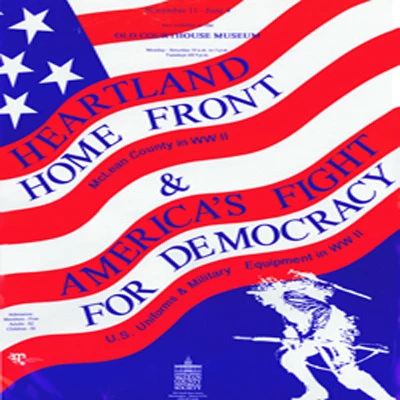
Heartland Home Front and America's Fight for Democracy: McLean County in WWII
Heartland Home Front and America's Fight for Democracy: McLean County in WWII A look at McLean County home-life during WWII and the efforts made by local citizens during this difficult time. This exhibit featured the uniforms and equipment used during WWII.Promenade Through the Park
Promenade Through the Park An exhibit that explored 19th and 20th century leisure-time outdoor activities in McLean County.Rituals & Passages: 75 Years of the American Passion Play
Rituals & Passages: 75 Years of the American Passion Play This exhibit explored the traditions and history of America's longest running Passion Play, still performed annually at Bloomington's Center for the Performing Arts. The exhibit featured costumes and reproductions of the play's beautiful hand painted backdrops.A Matter of Life and Death
A Matter of Life and Death Explored the human struggle to preserve health, defeat illness and delay death in McLean County. The efforts of doctors, nurses, patients, hospitals, and health and sanitation departments of the last 150 years are detailed to illustrate how our experience of health, illness and healing has changed as a result of progress in public health, medical science and general living standards.Want to know more? Purchase the book A matter of Life and Death by guest curator Lucinda McCray Beier in our gift shop.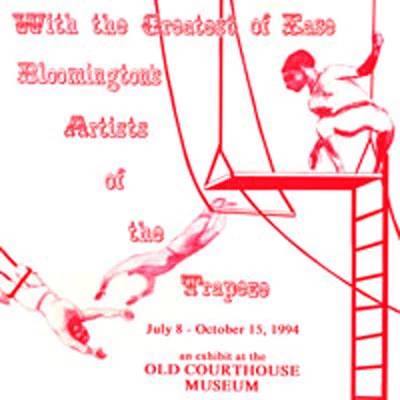
With the Greatest of Ease.. Bloomington's Artists of the Trapeze
With the Greatest of Ease.. Bloomington's Artists of the Trapeze America's young and daring aerialists mastered the art of the trapeze soon after it was introduced to the United in the early 1850's. Among the best of the flying acts in the United States in the late 1800s-early 1900s were many famous artists who called Bloomington/Normal home. They lived, trained and developed new acts right here. They improved upon European developments, and created new and innovative acts, making Bloomington/Normal a major training center—the aerial artist capital of the world."
Pedal Power
Pedal Power This exhibit featured nearly 4 dozen child-sized autos from the Bruce Callis Pedal Car Collection, which spans fifty years of pedal car production from the 1920s through the 1970s. Learn about the Callis collection, discover who designed these popular toys, and interact with these icons of childhoods past. Whether you remember these toys from your childhood or are discovering pedal cars for the first time, you will want to cruise down to the Museum and explore Pedal Power!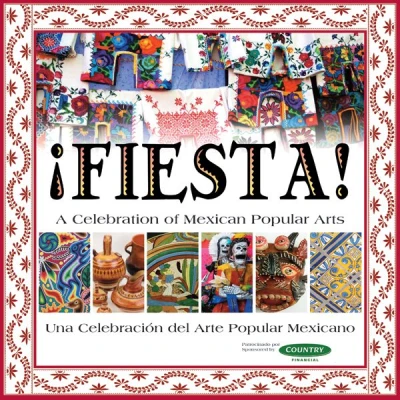
Fiesta! A Celebration of Mexican Popular Art
Fiesta! A Celebration of Mexican Popular Art Fiesta! A Celebration of Mexican Popular Art featured over 150 pieces of art made by the people of Mexico, including ceramics, textiles, paper mache, lacquerware, basketry, carved wood, leather, glass, and more from every region of the country.Click here to see what people thought about the exhibit through postcards. Click here to see photos from the exhibit opening.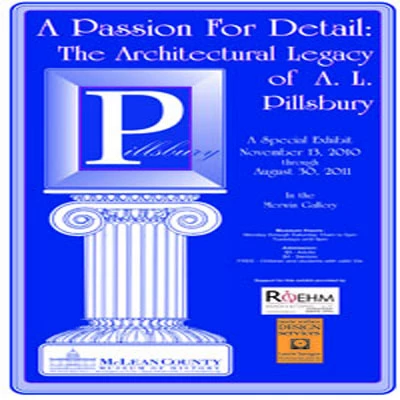
A Passion For Detail: The Architectural Legacy of A.L. Pillsbury
A Passion For Detail: The Architectural Legacy of A.L. Pillsbury Arthur Low Pillsbury was Bloomington's most prolific architect. In Bloomington alone Pillsbury designed over 300 homes between 1892 and 1925. His work also included churches, libraries, and businesses. The exhibit detailed the life and work of Pillsbury, and showcased many of the hand colored architectural renderings of the 104 schools he designed.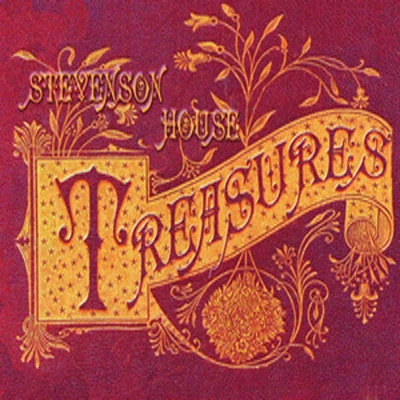
Treasures from the Stevenson House
Treasures from the Stevenson House The contents of Adlai Stevenson's boyhood home reflect his upbringing: the experience of being a member of two historic and politically involved Bloomington families, of growing up in an environment that reflected deep family roots, world travel, and popular trends in interior decoration. His upbringing in this home also shaped who he would become as an adult: a governor of the State of Illinois, a two time Democratic Party nominee for President of the United States, and a U.S. Ambassador to the United Nations. When the home was donated to the McLean County Historical Society, it came with family treasures, including antique furniture, travel mementos, and decorative objects collected by various members of the family. This exhibit featured some of the treasures from this unique home and family.
Come & Get It! The Way We Ate 1830-2008
Come & Get It! The Way We Ate 1830-2008 The way we eat and drink today differs dramatically from the ways of previous generations. This exhibit explored the food traditions and practices of McLean County's past and examined how these practices changed the way we eat today.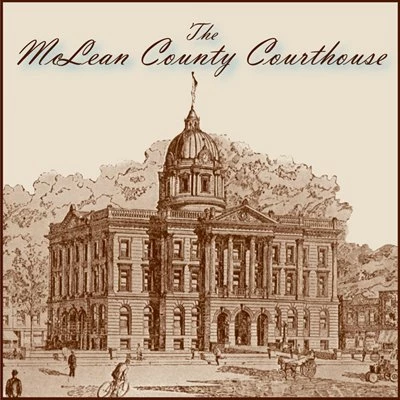
The McLean County Courthouse
The McLean County Courthouse McLean County's stately Renaissance style courthouse, with its beautiful copper dome and stately columns, symbolizes the ideals of power and democracy. This exhibit explores the history and construction of this building and the three courthouses used by McLean County government prior to its construction in 1903.Interested in knowing more? See The Old McLean County Courthouse, by Greg Koos, with photos by Lori Ann Cook-Neissler in the Museum's library.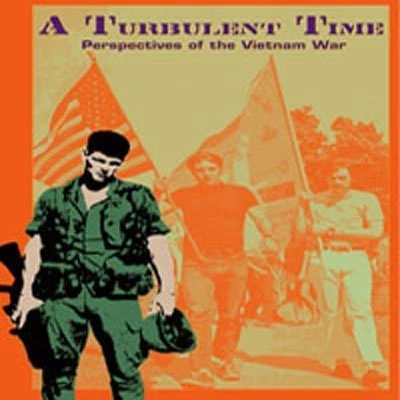
A Turbulent Time: Perspectives of the Vietnam War
A Turbulent Time: Perspectives of the Vietnam War The Vietnam War was both a foreign and domestic crisis for the United States. Almost 60,000 Americans and millions of Vietnamese died in the war, while the conflict provoked intense protests, debates and violence at home. This exhibit explored: how and why did the U.S. government get involved in Vietnam; how did local citizens and those serving in Vietnam felt about the war; how feelings changed as the war intensified; and why U.S. involvement continued even after antiwar protests escalated and the general public demanded an end to the war.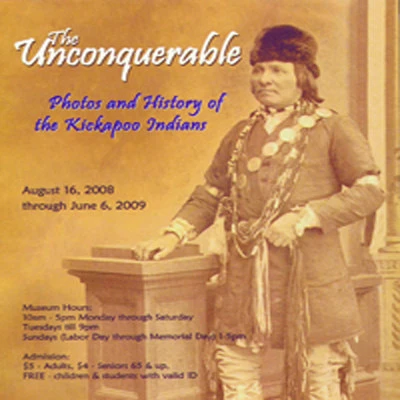
Unconquerable: Photos and History of the Kickapoo Indians
Unconquerable: Photos and History of the Kickapoo Indians This exhibit explored the history of the Kickapoo Indians ---- their movements across the prairie, their lifeways, their interactions with early settlers, and their forced removal to reservations west of the Mississippi River. It features the photographs commissioned by Milo Custer, an early curator for the McLean County Historical Society, whose efforts to document these people resulted in a body of work that reveals their history and culture.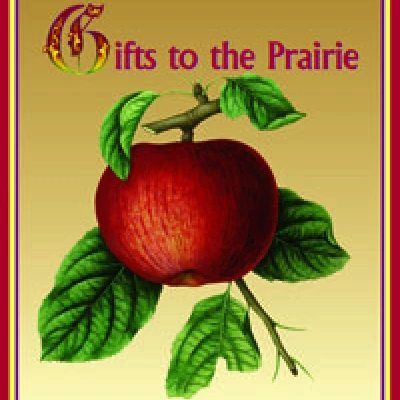
Gifts to the Prairie: The Work of Pioneer Nurserymen and the Art of the Prestele Family
Gifts to the Prairie: The Work of Pioneer Nurserymen and the Art of the Prestele Family As the American frontier expanded into the prairies of the Midwest, a voracious appetite for tree planting arose. F. K. Phoenix, who opened his Bloomington Nursery in 1852, possessed a love of nature and a missionary zeal to plant the prairies. In 1867, having established the largest nursery in the "West", he hired artist William Henry Prestele to oversee the design and production of exquisite hand-colored lithographs for the trade. The Prestele family pioneered this art form in America. Their carefully produced lithographs, combined with the boundless enthusiasm of Phoenix created a potent force for the planting of the prairies. This exhibit of their prints and the story of Phoenix's nursery provide an intimate window into the plants and people that helped shape an American landscape.Want to know more about this topic? See our exhibit catalog, Gifts to the Prairie, by Daryl Watson in the Museum library.Oddities! Or Not?
Oddities! Or Not? From a sausage stuffer to a tin can xylophone, a hatchel to a crocodile skin purse, this interactive exhibit tested visitors knowledge of some of the more unusual objects in the museum's collections.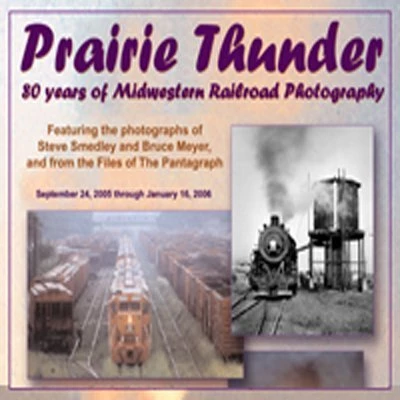
Prairie Thunder: 80 Years of Railroad Photography
Prairie Thunder: 80 Years of Railroad Photography This exhibit featured 75 large-scale photographs by railroad photographers Steve Smedley and Bruce Meyer, and from the Pantagraph Negative Collection.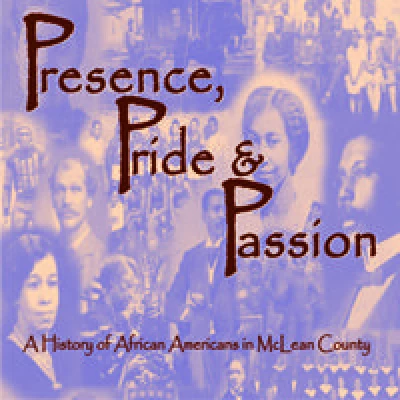
Presence, Pride & Passion: A History of African Americans in McLean County
Presence, Pride & Passion: A History of African Americans in McLean County Since their arrival in the 1840s, African Americans have helped to shape this community. This exhibit tells the story of their strong drive for independence which aided them in achieving success in business, securing political positions and attaining personal honor in service to the country; examines the actions they took against racial injustices in order to gain the rights and privileges due all citizens; and looks at how they nurtured one another by expressing their beliefs and celebrating the uniqueness of their culture. Want to know more? Purchase the exhibit companion book Presence, Pride, and Passion, by Susan Hartzold and Laura Wheaton in our gift shop. Or, explore the Bloomington-Normal Black History Project oral history interviews in the Museum's archives.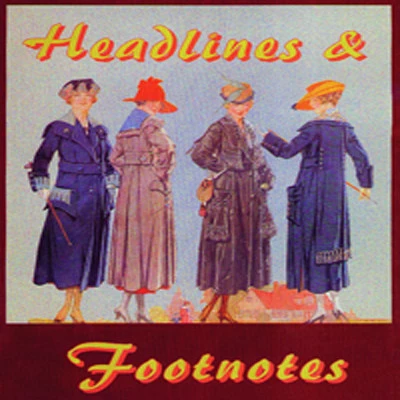
Headlines & Footnotes: Hats & Shoes from the collection of the McLean County Historical Society
Headlines & Footnotes: Hats & Shoes from the collection of the McLean County Historical Society This fun exhibit explored the history of hats and shoes in American popular culture and featured many pieces from the Museum's collection.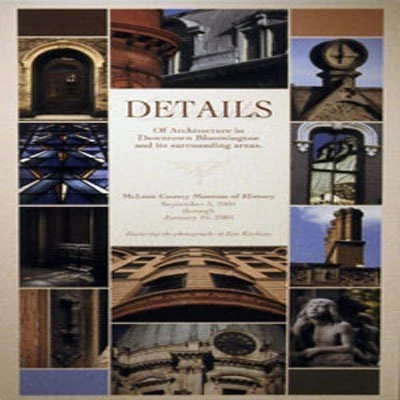
Details of Architecture
Details of Architecture This exhibit featured the work of Bloomington Photographer Ken Kashian. The stunning imagery included up-close details of some of Downtown Bloomington's and its surrounding areas most interesting buildings.Journey Through the Great Depression
Journey Through the Great Depression Faced with ever changing conditions the people of Central Illinois struggled to best utilize the resources available to them and ultimately survive the hardships of the Depression. Featuring over 300 artifacts and images, this exhibit revealed the ups and downs of the road during the Great Depression in McLean County.Want to know more? Purchase the exhibit companion publication, Journey through the Great Depression, by Susan Hartzold and Laura Wheaton. Or investigate the Depression oral history interviews conducted for this exhibit in the Museum's archives.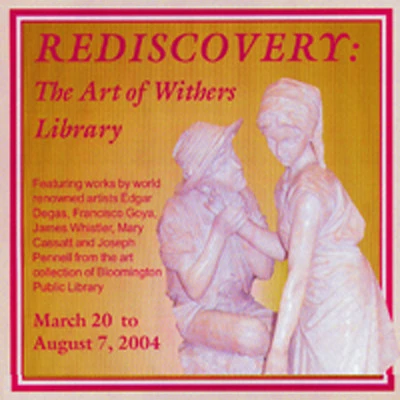
Rediscovery: The Art of Withers Library
Rediscovery: The Art of Withers Library Bloomington Public Library holds a large collection of art often unseen by the general public. This exhibit featured many of those unseen pieces.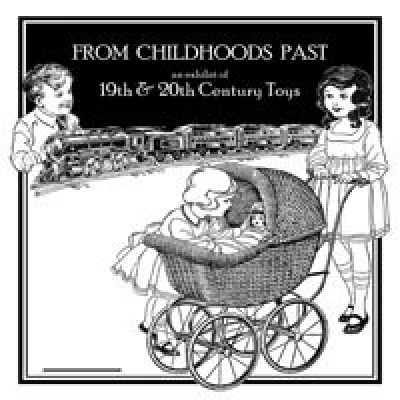
From Childhoods Past: 19th and 20th Century
From Childhoods Past: 19th and 20th Century As far back as history has been recorded there have been toys—toys to rattle and throw, toys to push and pull, toys to shoot and wind, and toys to spin and ride. This exhibit showcases a broad range of toys from the 19th and 20th century and provides insight into the culture, technology, and history of bygone days.
Adlai! The Life and Times of Adlai E. Stevenson II
Adlai! The Life and Times of Adlai E. Stevenson II Bloomington's Favorite son become a national figure in the political world, running for president twice, and eventually become the U.S. Ambassador to the United Nations.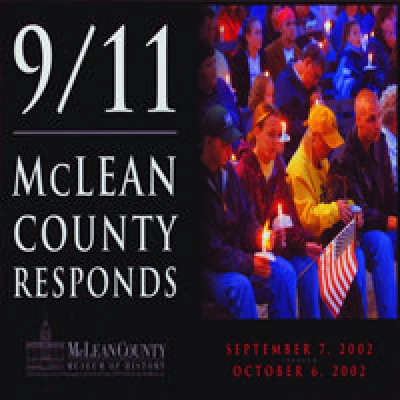
9/11: McLean County Responds
9/11: McLean County Responds Before the smoke cleared on the events of September 11, 2001, the response by McLean County residents was both immediate and generous. Attempts to raise money for victims, candlelight vigils, special banners and trips by local volunteers to assist with recovery efforts were all part of the efforts made by McLean County residents. On the 1-year anniversary of 9-11 this exhibit told the story of the attack and the efforts made by local citizens. It also honored the victims of the September 11th attacks.Growing Up in the Fifties
Growing Up in the Fifties A lighthearted look at McLean County in the 1950s through the eyes of McLean County residents.Want to know more about this topic? View the Growing up in the 50s oral history interviews conducted for this project in the Museum's archives.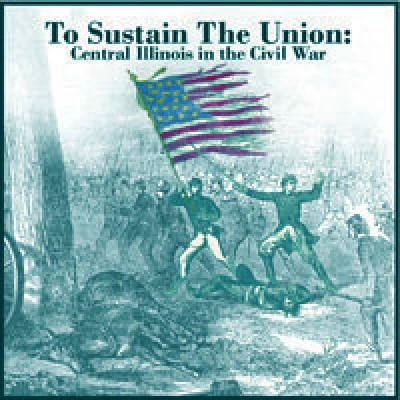
To Sustain the Union: Central Illinois in the Civil War
To Sustain the Union: Central Illinois in the Civil War McLean County soldiers were involved in every key battle of the Civil War. This exhibit tells of their efforts and the efforts of those at home, through stories, images, maps and artifacts. The exhibit also includes a detailed timeline of Civil War battles, interspersed with local happenings as reported by the local newspaper the Weekly Pantagraph. Want to know more? See the companion book to the exhibit, to Sustain the Union by Susan Hartzold and Laura Wheaton in the Museum's library, or purchase It Has Begun: The Pantagraph Reports the Civil War, by Don Munson in the Museum's gift shop.
Lincoln Slept Here? Connecting to Greatness
Lincoln Slept Here? Connecting to Greatness Everyone would like to be somehow connected to someone they look up to or idolize. In this exhibit we examine items in the Museum's collection whose donors say belonged to, or were used by our 16th President Abraham Lincoln. Using in-depth research the exhibit examined and revealed the truth to each claim.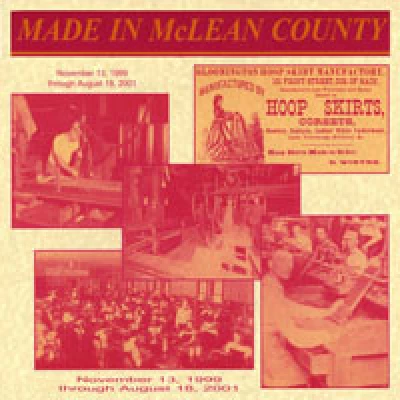
Made in McLean County: A History of Manufacturing in McLean County
Made in McLean County: A History of Manufacturing in McLean County The vast array of products Made in McLean County offer a fascinating glimpse of changing economic and social conditions in our community. From the 19th century craft worker's hand-made tools and clothing to today's high tech production, local residents have applied their skills as backyard tinkers, business visionaries and hard-working laborers. The human experiences represented in this exhibit include the stories of dreamers, inventors, businessmen, union leaders and workers.Want to know more about this topic? See the ABCs of Manufacturing, and other manuscripts written by Mike Matejka in the Museum's archives.
Just Corn: The "Amaizing" Story
Just Corn: The "Amaizing" Story This exhibit explores the history of corn growing in McLean County. Area farmers consistently produces more corn than any other county in the United States. Corn has been the primary crop of this area since the Native American woodland people lived here over 500 years ago. White settlement of McLean County was primarily the result of farmers seeking good corn land. Corn provided the backbone of McLean County's wealth through the 19th century. In the 20th century McLean County lead the way in the development and adoption of scientifically bred corn, revolutionizing the way corn is produced.Want to know more about this topic? Purchase the Heart of the Cornbelt, by William Walters in the Museum gift shop, or view the Agriculture Oral Histories conducted for this project in the Museum's archives.Route 66: Goin' Somewhere
Route 66: Goin' Somewhere This exhibit takes a detailed look at Route 66 as it crosses McLean County, featuring local stops, sites, and stories of the "Mother Road."Want to know more about this topic? See the companion publication Route 66: Goin' Somewhere, by Terri Ryburn, in the Museum's library.The Popular Paisley Pattern
The Popular Paisley Pattern The paisley pattern is ancient, originally developed in Persia to symbolize the tree of life. In this exhibit of beautiful textiles, the use of the paisley pattern in 19th and 20th century clothing was explored.